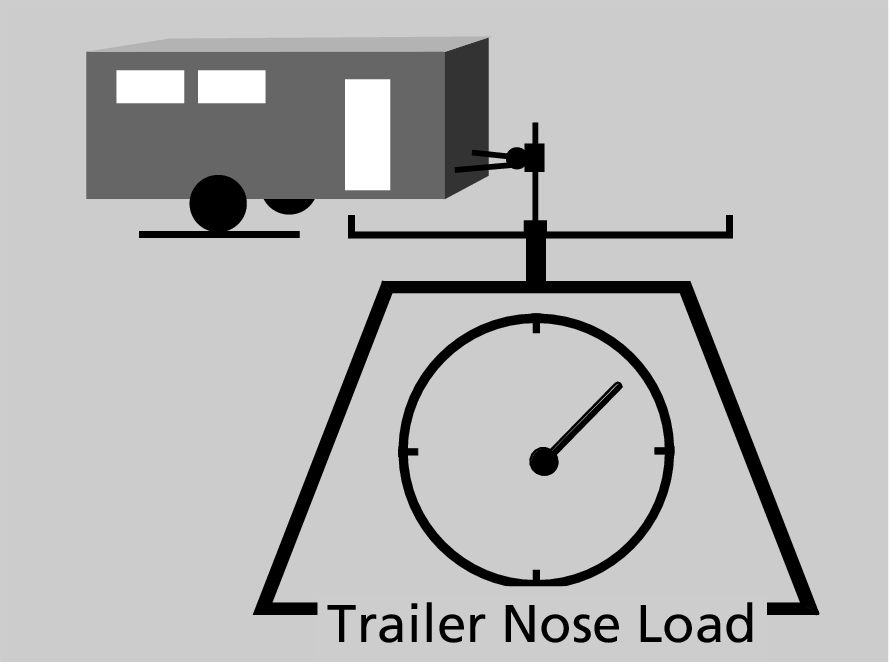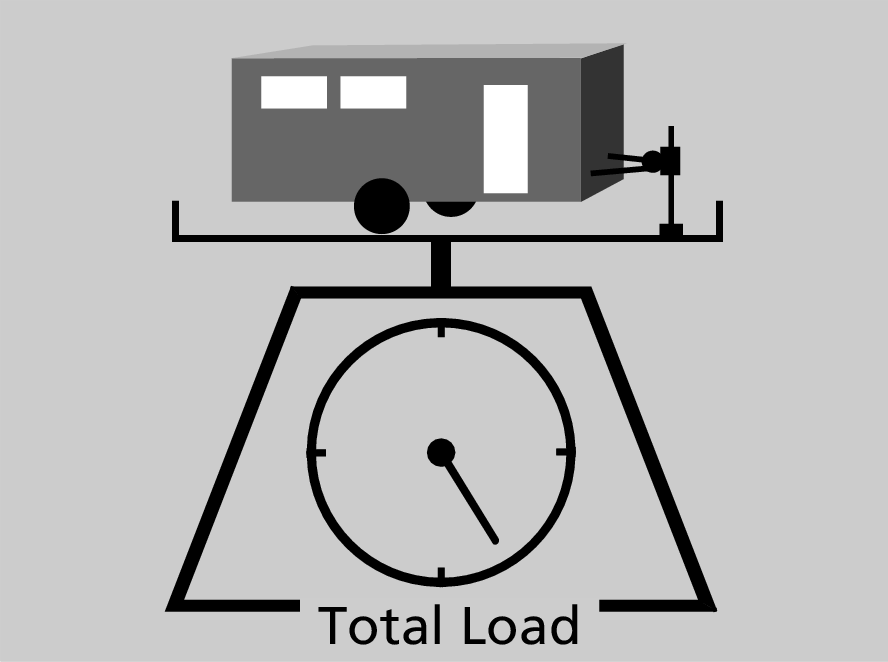Towing Preparation
Towing Load Limits
Your vehicle can tow a trailer if you carefully observe the load limits, use the proper equipment, and follow the towing guidelines. Check the load limits before driving.
-
Trailer Nose load
The trailer nose load should never exceed 95 kg (manual transmission)/80 kg (continuously variable transmission). This is the amount of weight the trailer puts on the towbar when it is fully-loaded. As a rule of thumb for trailer weights of less than 950 kg (manual transmission)/800 kg (continuously variable transmission), the trailer nose load should be 10 percent of the total trailer package.
- Excessive trailer nose load reduces front tyre traction and steering control. Too little trailer nose load can make the trailer unstable and cause it to sway.
- To achieve a proper trailer nose load, start by loading 60% of the load toward the front of the trailer and 40% toward the rear. Readjust the load as needed.
-

- WARNING
- Exceeding any load limit or improperly loading your vehicle and trailer can cause a crash in which you can be seriously hurt or killed.
Check the loading of your vehicle and trailer carefully before starting to drive.
- Detail
-
Check if all loads are within limits at a public scale.
If a public scale is not available, add the estimated weight of your luggage load to the weight of your trailer (as quoted by the manufacturer), and the trailer nose load.Break-in Period
Avoid towing a trailer during your vehicle's first 1,000 km.If you tow a trailer in mountainous conditions, remember to reduce 10% of the combined vehicle and trailer weights from the maximum towing weight for every 1,000 metres of elevation.Never exceed the maximum towing weight and any specified load limit.
Towing Equipment and Accessories
Towing equipment varies by the size of your trailer, how much load you are towing, and where you are towing.
- Detail
-
Make sure that all equipment is properly installed and maintained, and that it meets the regulations of the country where you are driving.Consult your trailer sales or rental agency if any other items are recommended or required for your towing situation.The lighting and wiring of trailers can vary by type and brand. If a connector is required, it should only be installed by a qualified technician.
Towbars
The towbar must be of an approved type and properly bolted to the underbody.
Safety chains
Always use safety chains when you tow a trailer. Leave enough slack to allow the trailer to turn corners easily, but do not allow the chains to drag on the ground.
Trailer brakes
If you are thinking of getting a trailer that has brakes, be sure they are electronically actuated. Do not attempt to tap into your vehicle’s hydraulic system. No matter how successful it may seem, any attempt to attach trailer brakes to your vehicle’s hydraulic system will lower braking effectiveness and create a potential hazard.
Additional towing equipment
There may be laws requiring special outside mirrors when towing a trailer. Even if mirrors are not required in your locale, you should install special mirrors if visibility is restricted in any way.
Trailer light
Trailer lights and equipment must comply with the regulations of the country where you are driving. Check with your local trailer sales or rental agency for the requirements in the area where you plan to tow.
- Recommend page
